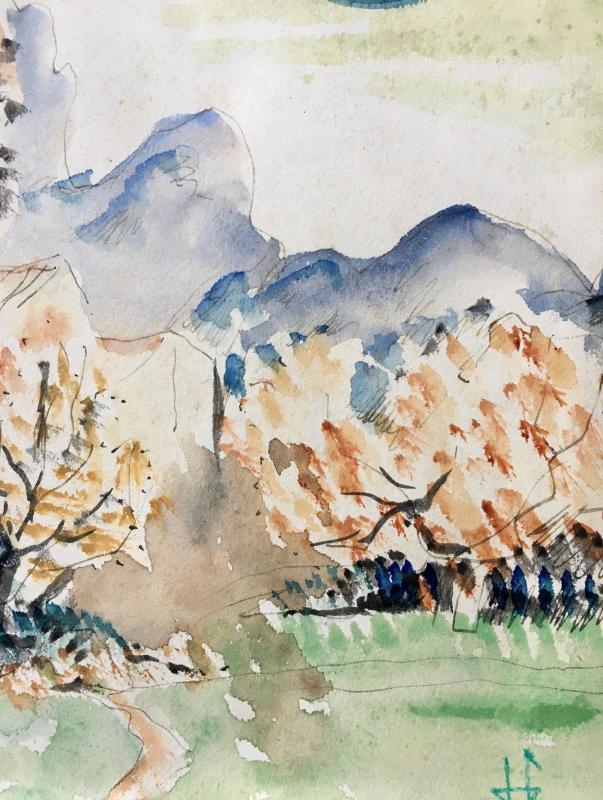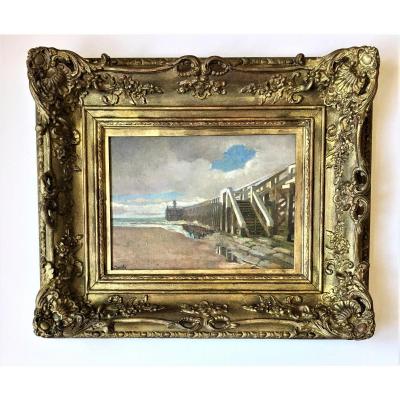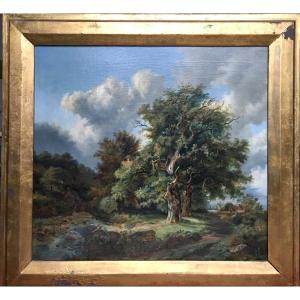Dimensions of the watercolor: 17 x 24 cm. HP monogrammed.
René Georges Hermann Paul, dit Hermann-Paul, born in Paris on December 27, 1864, and died in Saintes-Maries-de-la-Mer on June 23, 1940, is a French painter and illustrator. He apprenticed at the School of Decorative Arts in Paris and at the Académie Julian where he met the artists who made up the group of neo-impressionists and that of the “Nabis” of which he was a part. His teachers are Henry Lerolle and Gustave Colin.
From 1890, he carried out his first lithographic works in black or in color alongside Vuillard, Bonnard and Toulouse-Lautrec.
From 1900 to 1914, Hermann-Paul who, in addition to his lithographs and drawings, already exhibited pastels, watercolors and colored pencils, concentrated on his painting. He produced many portraits and his most remarkable work was a large portrait of Cézanne, of whom he had always been a fervent admirer, exhibited at the Salon des Indépendants in 1905 (now kept at the Calvet museum in Aix-en-Provence) .
In 1913, he published a collection of drawings On the Rhône, from Lyon to Saint Louis, the first testimony to the importance that the South, its landscapes and its inhabitants, more particularly the Camargue, will take in his work.
Throughout his career, Hermann-Paul took part in numerous fairs and exhibitions, collective or private. In 1891, he was part of the Organizing Committee for the “Refused” fair, initiated and chaired by Louis Anquetin, which will be held at the Palais des Arts Liberals from May 29 to June 30. Associated until the end of the century with neo-impressionism and the Nabis, he participated in the Salon des Indépendants (between 1892 and 1894), the Salon de la Libre Esthétique in Brussels (1894, 1895, 1897, 1901) or the Salon. from Samuel Bing's Art Nouveau (December 1895- January 1896).
Works in Museums.


































 Le Magazine de PROANTIC
Le Magazine de PROANTIC TRÉSORS Magazine
TRÉSORS Magazine Rivista Artiquariato
Rivista Artiquariato